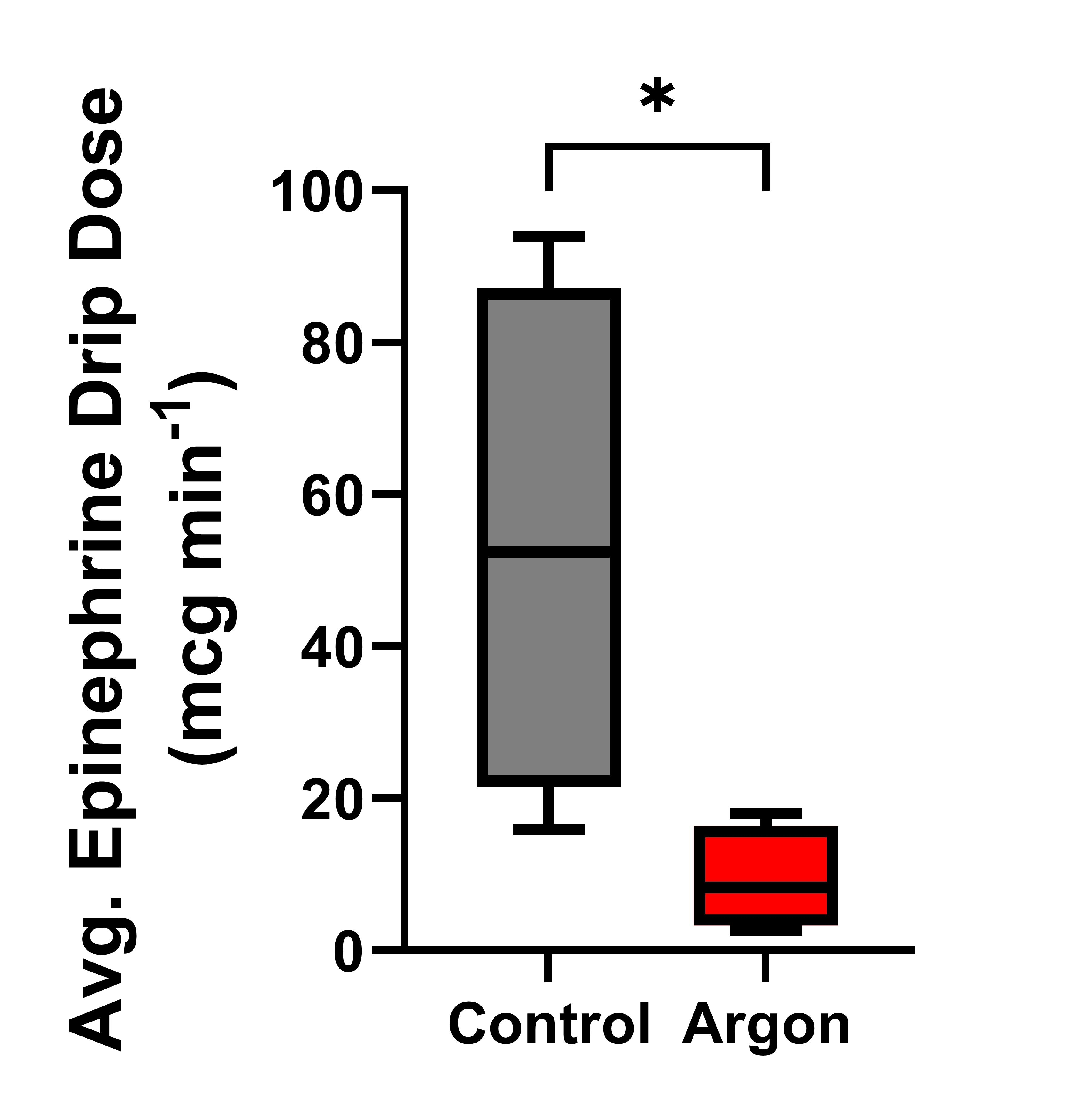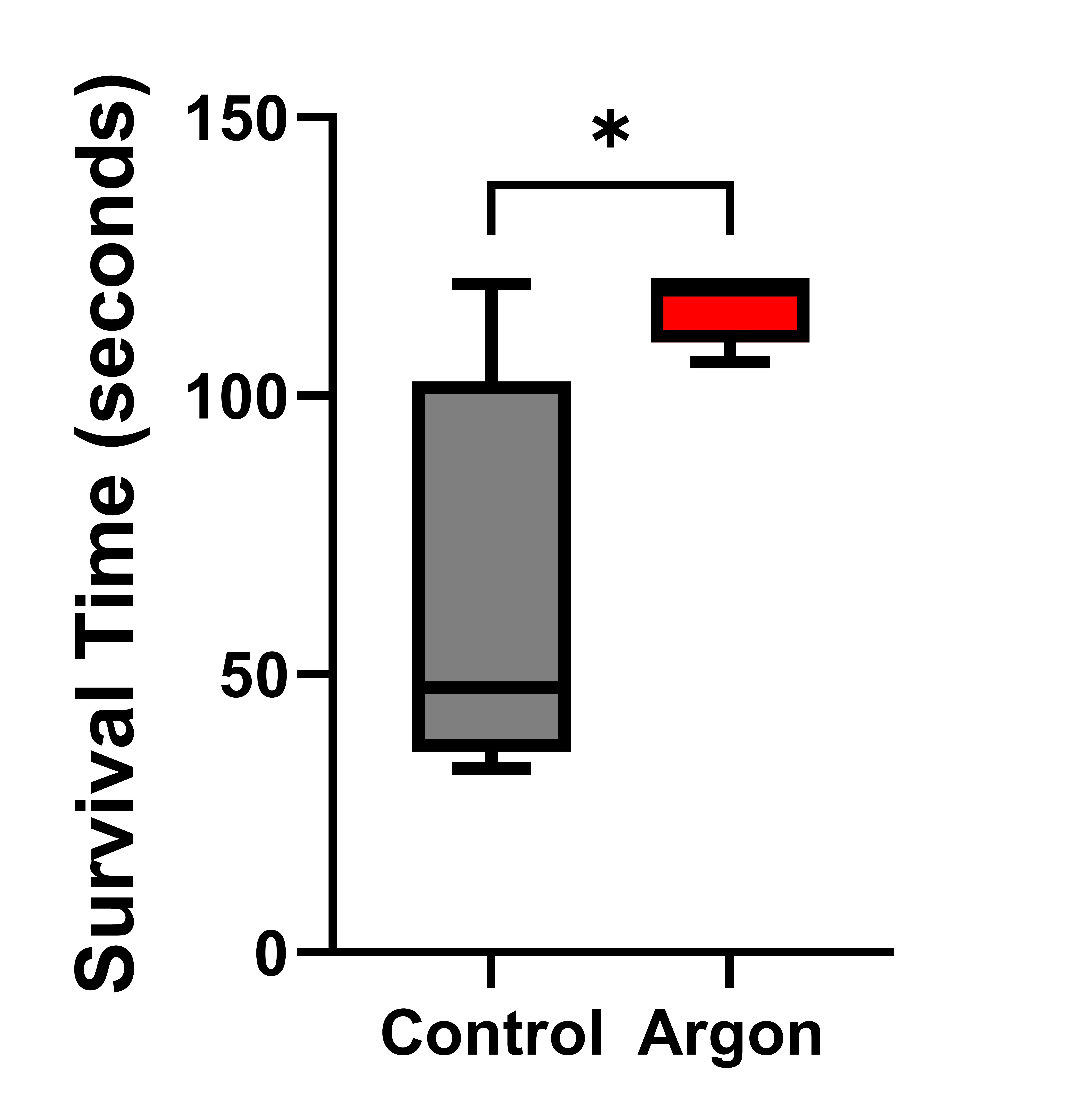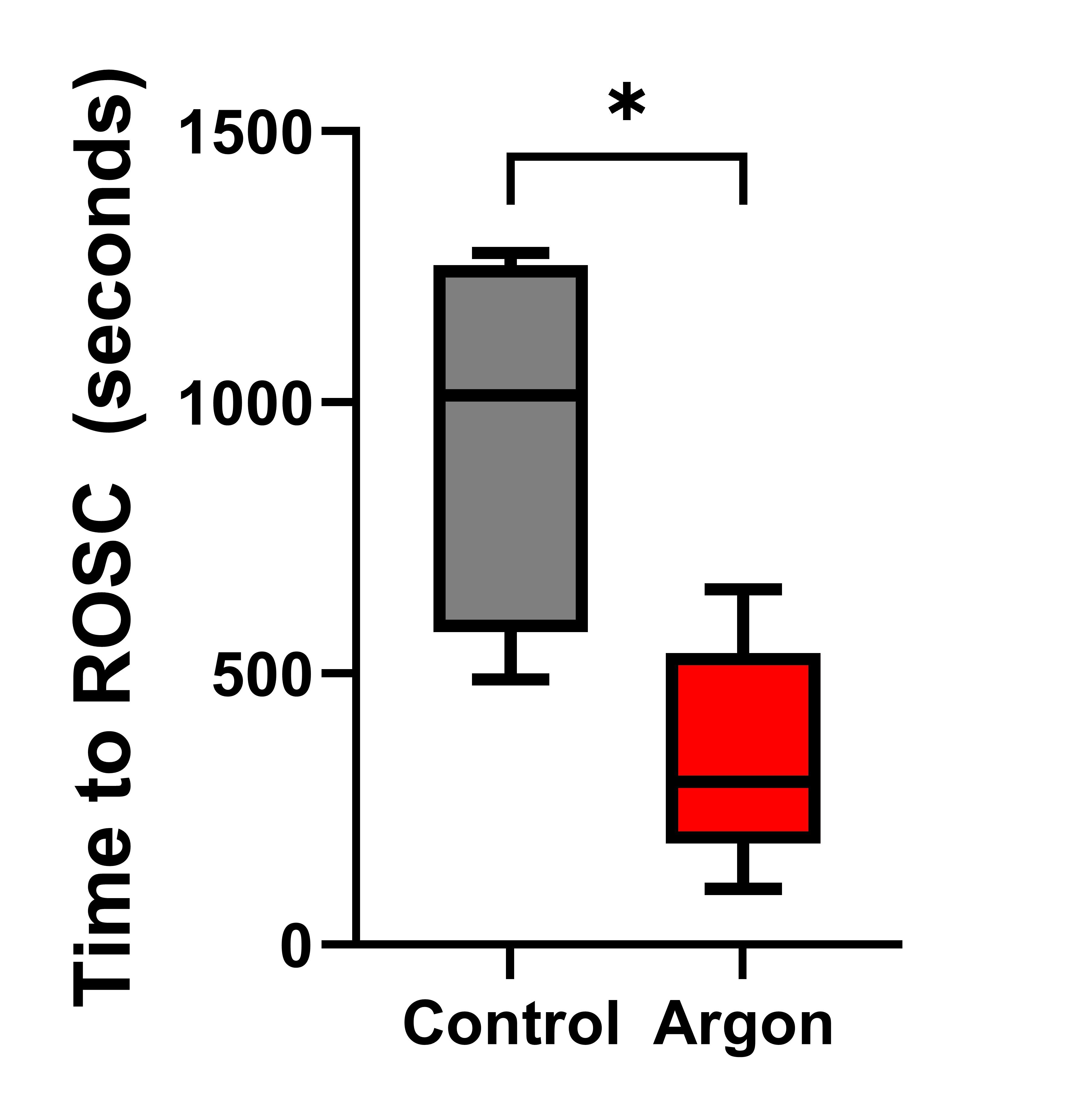Final ID: Su106
Cardiac Protection using Inhaled Argon During Resuscitation from Cardiac Arrest in Rats
Abstract Body:
Recent investigations have demonstrated early promising results using inhaled noble gas therapy during cardiopulmonary resuscitation. Despite characterization as chemically inert, they have demonstrated biological activity at varied enzyme and receptor sites. Importantly, their mechanism of action on ischemia reperfusion injury remains unelucidated.1 We aimed to determine the efficacy of inhaled argon on ameliorating cardiac dysfunction associated with fibrillatory arrest in a rat model.
Fifteen male Sprague Dawley rats were utilized. Rats were mechanically ventilated via endotracheal tube and anesthetized with isoflurane. Femoral artery and vein were cannulated for pressure monitoring and drug delivery. An esophageal pacing probe provided low voltage current to induce fibrillatory arrest lasting a total of 7.5 minutes. CPR was initiated utilizing an automated chest compressor at a rate of 200/min with a controlled depth. Animals were randomly assigned to inhaled argon (70% with 30% O2) or control (70% N2 with 30% O2.) Defibrillation and epinephrine were given, in a standardized fashion. If return of spontaneous circulation (ROSC) was achieved, epinephrine drip was titrated to maintain a mean arterial pressure (MAP) of 70 mmHg. Data was collected at 15 min, 1 and 2 hr after ROSC. Data were analyzed using unpaired t-test. Significance set at p <.05, two-tailed.
There was no significant difference in rate of ROSC between groups (66% control vs 83% argon), however time to achieve ROSC was significantly reduced in the argon group, 350 v. 948 seconds, p = 0.02. Furthermore, animals treated with argon had increased survival time, 116 min vs 62 min control, p = 0.03. Decreased epinephrine requirement to maintain mean arterial pressure at 70 mmHg was seen in argon group 9.3 mcg min-1 vs 53.7 mcg min-1 in the control group, p = .04. There was no significant difference in peak lactate or other arterial blood gas markers.
Inhaled argon therapy remains a promising novel treatment after prolonged cardiac arrest. While other animal models have suggested similar findings, this is the first description in a fibrillatory rat model. Continued evaluation should aim to elucidate mechanism of action after demonstration of model effectiveness.
Recent investigations have demonstrated early promising results using inhaled noble gas therapy during cardiopulmonary resuscitation. Despite characterization as chemically inert, they have demonstrated biological activity at varied enzyme and receptor sites. Importantly, their mechanism of action on ischemia reperfusion injury remains unelucidated.1 We aimed to determine the efficacy of inhaled argon on ameliorating cardiac dysfunction associated with fibrillatory arrest in a rat model.
Fifteen male Sprague Dawley rats were utilized. Rats were mechanically ventilated via endotracheal tube and anesthetized with isoflurane. Femoral artery and vein were cannulated for pressure monitoring and drug delivery. An esophageal pacing probe provided low voltage current to induce fibrillatory arrest lasting a total of 7.5 minutes. CPR was initiated utilizing an automated chest compressor at a rate of 200/min with a controlled depth. Animals were randomly assigned to inhaled argon (70% with 30% O2) or control (70% N2 with 30% O2.) Defibrillation and epinephrine were given, in a standardized fashion. If return of spontaneous circulation (ROSC) was achieved, epinephrine drip was titrated to maintain a mean arterial pressure (MAP) of 70 mmHg. Data was collected at 15 min, 1 and 2 hr after ROSC. Data were analyzed using unpaired t-test. Significance set at p <.05, two-tailed.
There was no significant difference in rate of ROSC between groups (66% control vs 83% argon), however time to achieve ROSC was significantly reduced in the argon group, 350 v. 948 seconds, p = 0.02. Furthermore, animals treated with argon had increased survival time, 116 min vs 62 min control, p = 0.03. Decreased epinephrine requirement to maintain mean arterial pressure at 70 mmHg was seen in argon group 9.3 mcg min-1 vs 53.7 mcg min-1 in the control group, p = .04. There was no significant difference in peak lactate or other arterial blood gas markers.
Inhaled argon therapy remains a promising novel treatment after prolonged cardiac arrest. While other animal models have suggested similar findings, this is the first description in a fibrillatory rat model. Continued evaluation should aim to elucidate mechanism of action after demonstration of model effectiveness.
More abstracts on this topic:
Deep Learning for Defibrillator Shock Decision Analysis during Manual CPR
Coult Jason, Rea Thomas, Kwok Heemun, King Julia, Bhandari Shiv, Blackwood Jennifer, Johnson Nicholas, Boyle Patrick, Kutz J. Nathan, Kudenchuk Peter
AI-powered Smartphone-based Quantitative Pupillometry for Reliable Detection of Unreactive “Blown“ PupilsJohn Ivo, Manohar Sanjay, Chrapkiewicz Radek, Bogucki Aleksander, Laskowski Michal, Jachura Michal, Swiatek Michal, Chrost Hugo, Wlodarski Michal, Dziubinski Marek, Neffendorf James



